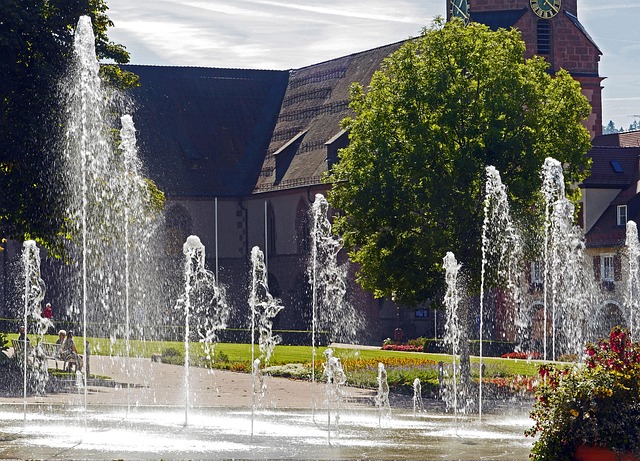Urban neighborhoods often feel disconnected from the natural world, but the rise of sustainable civic projects demonstrates how green gardens can transform streetscapes into vibrant, livable habitats. By integrating native plants, edible gardens, and green infrastructure into public spaces, communities are redefining the relationship between people and the environment. This article explores the many ways sustainable civic projects revitalize neighborhoods, fostering ecological resilience, social cohesion, and economic vitality.
The Foundations of Sustainable Civic Projects
At their core, sustainable civic projects are community‑driven initiatives that prioritize ecological balance, resource efficiency, and public well‑being. These projects often begin with a shared vision: to create green spaces that provide food, habitat, and recreation while reducing environmental footprints. The planning process typically involves local stakeholders, city planners, ecologists, and volunteers working together to assess soil quality, sunlight exposure, water availability, and existing biodiversity.
- Community engagement sessions to gather ideas and address concerns.
- Environmental impact assessments that guide plant selection and design.
- Funding strategies that blend public budgets, private sponsorships, and grant programs.
Ecological Benefits of Green Gardens
Green gardens offer a multitude of ecological advantages that ripple through urban ecosystems. Native plantings attract pollinators such as bees and butterflies, supporting local food webs. By capturing rainwater and filtering runoff, gardens reduce the strain on storm‑water systems and lower the risk of flooding. Additionally, strategically placed trees and shrubs mitigate the urban heat island effect, cooling streets and improving air quality. These benefits underscore why sustainable civic projects are essential tools for climate adaptation and environmental stewardship.
“Planting native species in public spaces turns concrete into ecosystems,” notes a local environmental advocate. “It’s not just beautification; it’s restoration.”
Designing for Inclusivity and Accessibility
One of the most compelling aspects of sustainable civic projects is their capacity to create inclusive, accessible spaces. By incorporating raised beds, wheelchair‑accessible pathways, and multilingual signage, green gardens become welcoming for residents of all ages and abilities. Inclusive design also encourages diverse community members to participate in gardening, fostering a sense of ownership and pride. When people see their neighborhood transformed into a shared green haven, civic engagement naturally increases, strengthening the social fabric.
Community‑Led Agriculture and Food Security
Many sustainable civic projects incorporate community gardens that provide fresh produce to local residents. These edible landscapes not only supply nutritious food but also serve as informal classrooms where participants learn about composting, seed saving, and regenerative agriculture. Studies have shown that neighborhood gardens reduce food deserts, lower grocery bills, and improve dietary habits. Moreover, the act of cultivating food can be a powerful tool for mental health, offering quiet moments of reflection and connection to the land.
- Harvest festivals that celebrate seasonal yields and cultural traditions.
- Workshops on drought‑resistant planting techniques suitable for local climates.
- Seed‑sharing networks that preserve heirloom varieties and support biodiversity.
Funding, Partnerships, and Long‑Term Sustainability
While many sustainable civic projects start with volunteer enthusiasm, long‑term success depends on stable funding and robust partnerships. Municipal budgets may allocate a portion of green infrastructure funds to garden maintenance, but many communities rely on philanthropic foundations, corporate sponsorships, and community‑funded initiatives. Transparent budgeting, clear maintenance plans, and measurable ecological outcomes are key to attracting and retaining investors. Additionally, partnerships with local schools, nonprofits, and research institutions can provide expertise, labor, and educational opportunities.
Overcoming Challenges and Ensuring Resilience
Implementing green gardens in urban settings is not without obstacles. Pest pressures, soil contamination, and limited space often complicate design decisions. However, adopting integrated pest management practices, using phytoremediation techniques, and maximizing vertical space can mitigate these challenges. Continuous community feedback loops help identify maintenance issues early, while adaptive management strategies allow gardens to evolve with changing environmental conditions. Ultimately, resilience hinges on a willingness to experiment, learn, and adjust.
Looking Forward: The Future of Sustainable Civic Projects
As cities grapple with climate change, population growth, and social inequality, sustainable civic projects will play an increasingly vital role in urban planning. Emerging technologies—such as smart irrigation systems, soil sensors, and community‑sourced data platforms—offer new ways to enhance garden efficiency and engagement. Policy makers are beginning to recognize the value of green infrastructure, embedding it into zoning codes, transportation plans, and public health strategies. By weaving sustainable civic projects into the city’s fabric, we create habitats that nurture both people and the planet.
In conclusion, green gardens are more than ornamental additions to neighborhoods; they are dynamic ecosystems that provide ecological services, social benefits, and economic resilience. Sustainable civic projects embody the principle that cities can thrive by honoring the natural world. When residents, planners, and nature collaborate, neighborhoods transform into vibrant, sustainable habitats—places where community, biodiversity, and well‑being grow together. The next generation of urban landscapes will likely owe its character to these living, breathing civic gardens.



